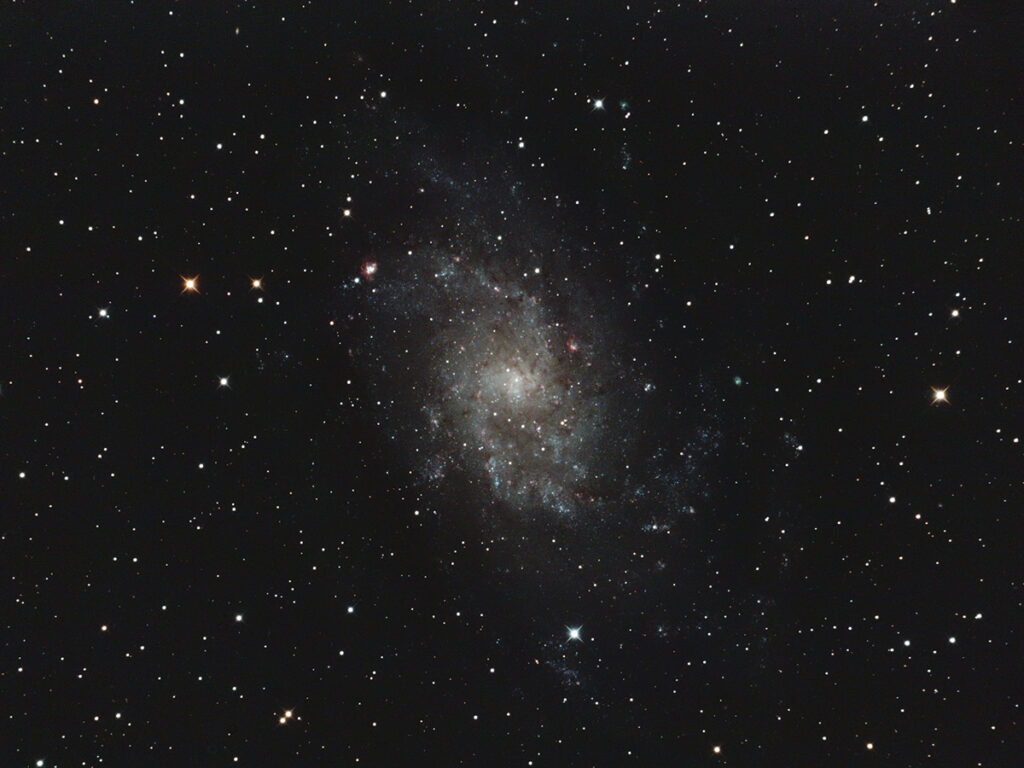
Telescope: Astro-Tech 8” f/8 Ritchey-Chretien, Orion Atlas EQ-G
Camera: Canon EOS Ra, Baader Mk III MPCC
Filter: Orion Imaging Skyglow Filter
Guide scope: Astro-Tech 60mm, Starlight Xpress Super Star, PHD2
Exposure: (11+21)x180sec, ISO 800, saved as RAW
Darks: Internal (Long Exposure Noise Reduction On)
Flats: 32×1/20sec, Tee shirt flats taken at dusk
Average Light Pollution: Red zone, Bortle 8, fair transparency
Lensed Sky Quality Meter: 18.6
Stacking: Mean with a 1-sigma clip.
White Balance: Nebulosity Automatic
Software: Backyard EOS, Deep Sky Stacker, Nebulosity, Photoshop
This is M33, a giant spiral galaxy in Triangulum (the Triangle). It is so large (about twice the size of the full moon) that its light is spread out, making it very challenging to see visually except under very dark skies. From my backyard it never shows more than a slight patch of gray, even in my 16.5”. M33 is the 3rd largest galaxy in the Local Group, behind the Andromeda galaxy and the Milky Way. It is also just a tad further away than Andromeda, about 3 million light years versus 2 million for Andromeda. It is close enough that we can glimpse star clusters and nebula within it, such as the bright star-forming region to the upper left of the inner spiral arms. This region has its own designation (NGC 604) and is one of the largest H II regions known. If you look closely you can see several smaller star formation regions in a line starting at NGC 604 and trailing off to the lower right as well as many beautiful little clumps of stars sprinkled all along the spiral arms.
M33 is currently rises in the northeast during the early evening and it high overhead after midnight.
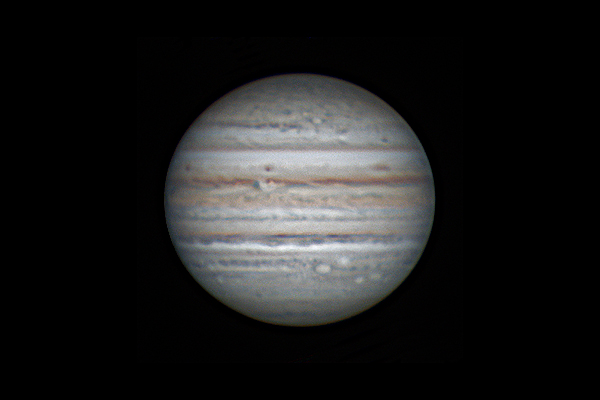
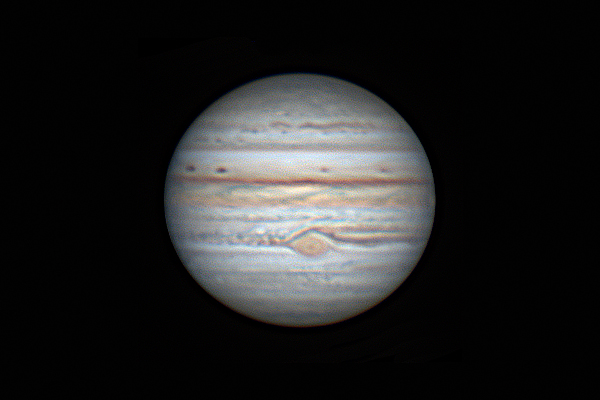
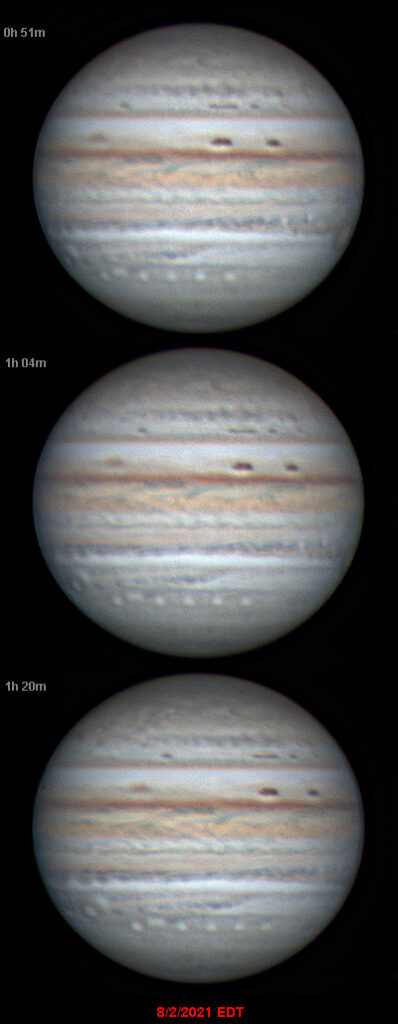
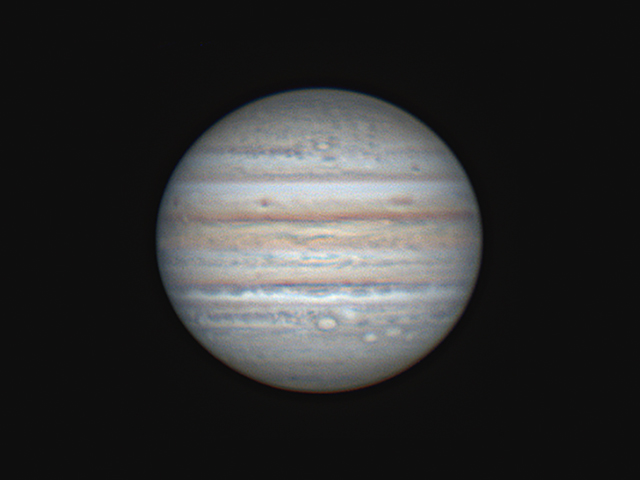

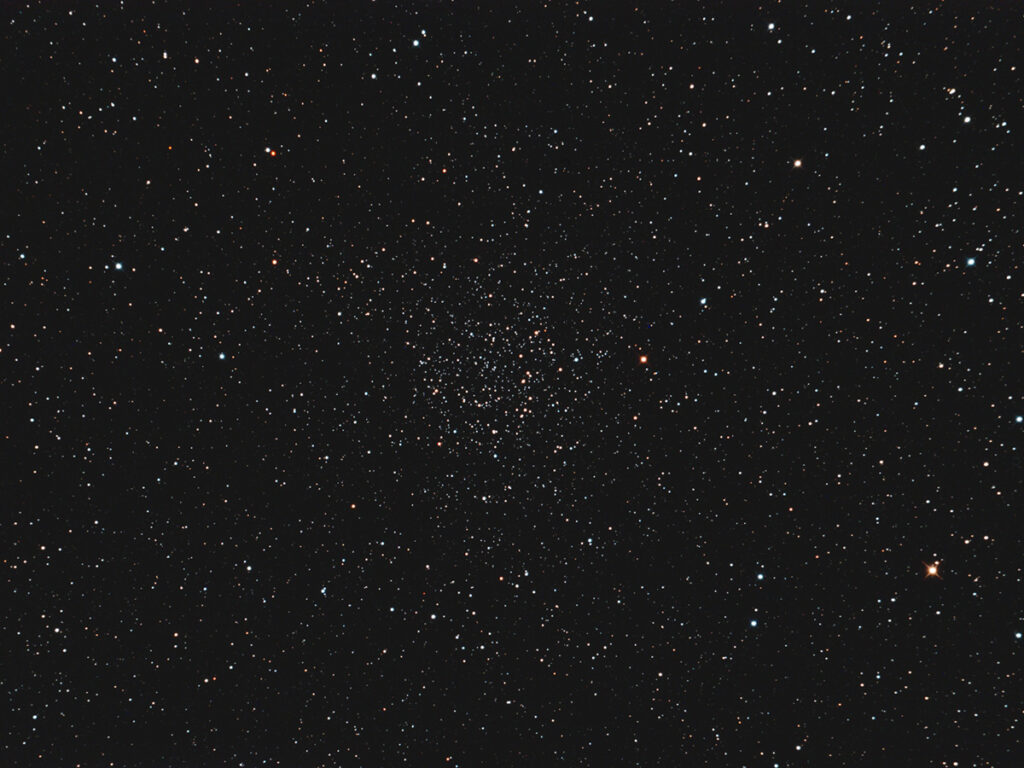
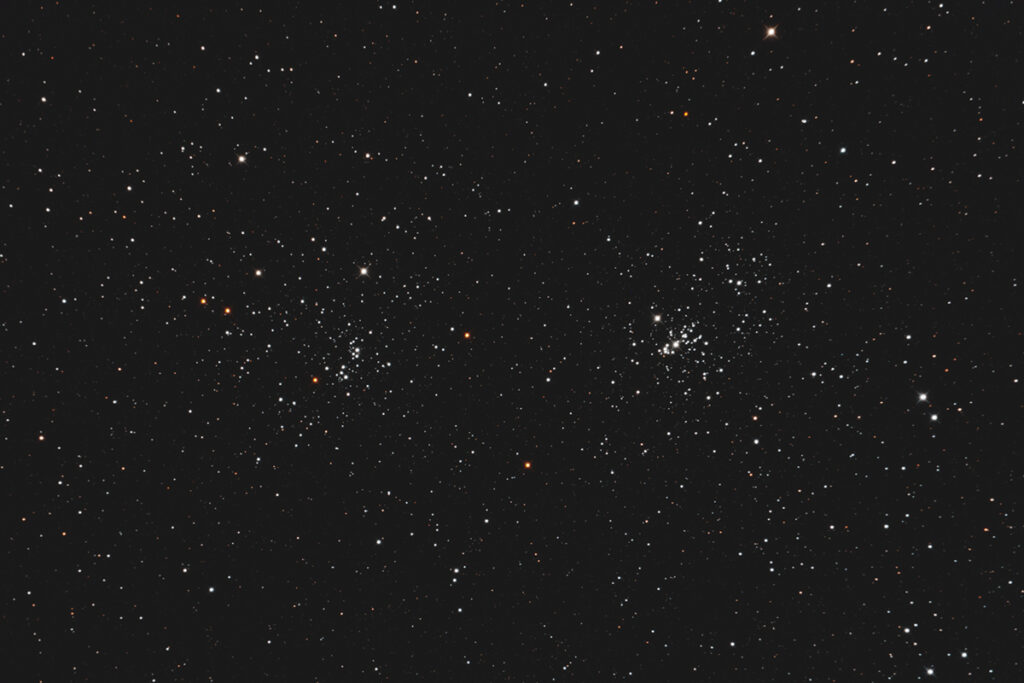
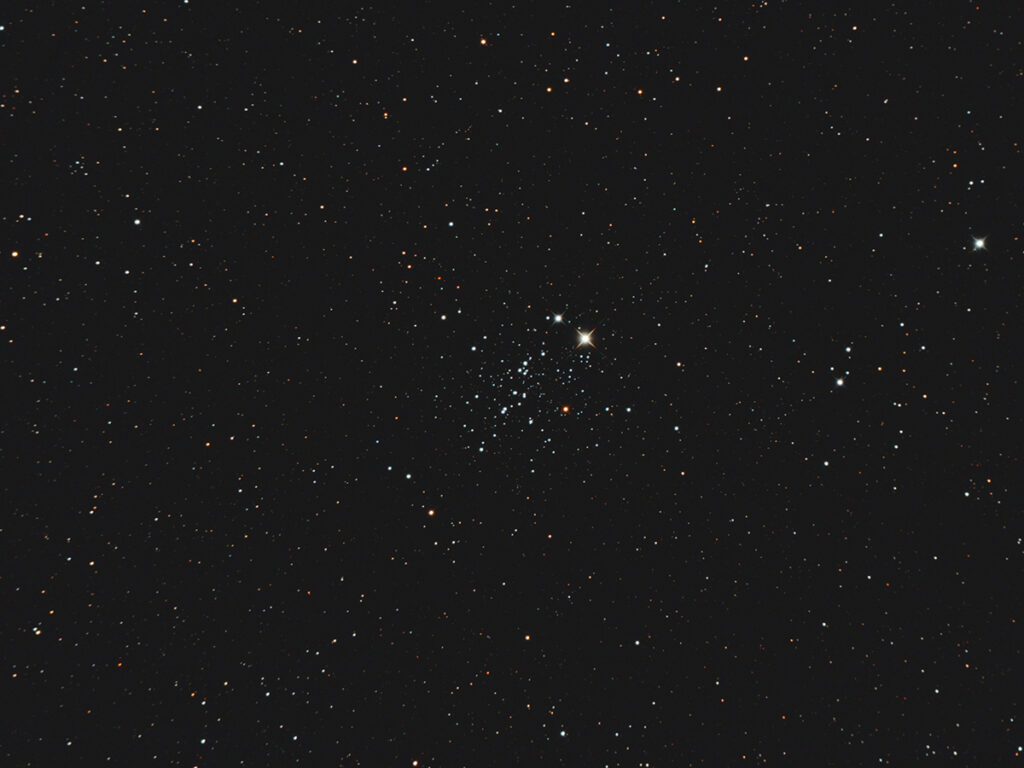
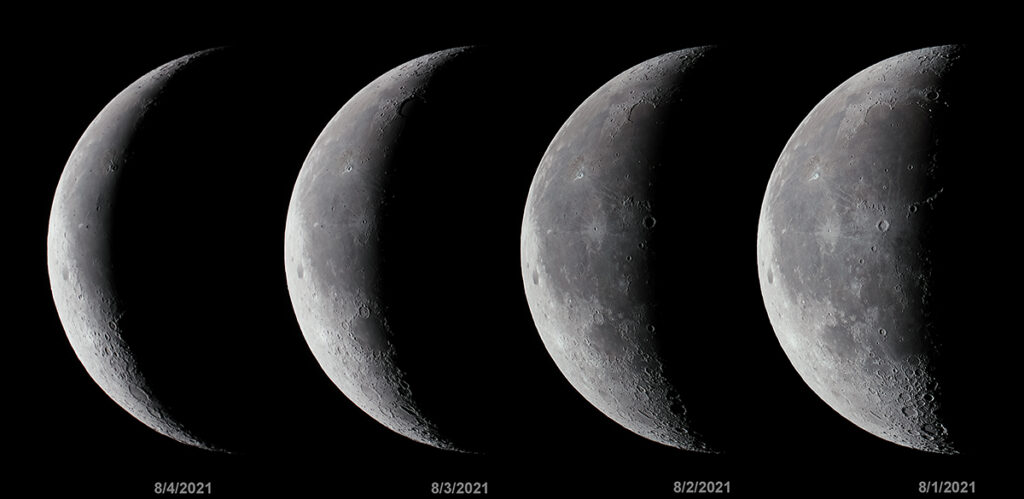
Recent Comments